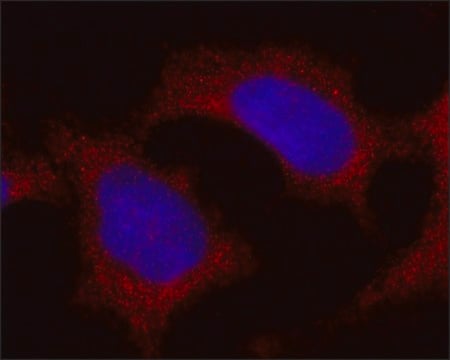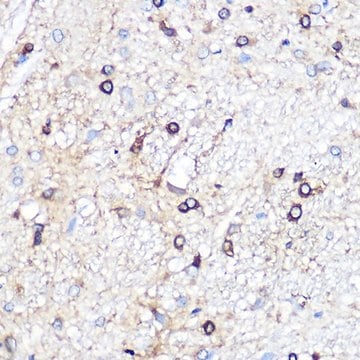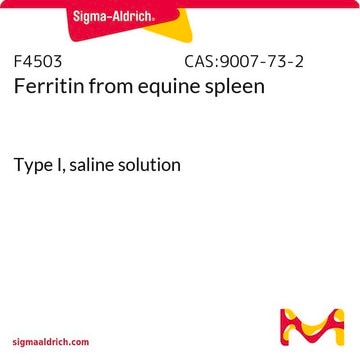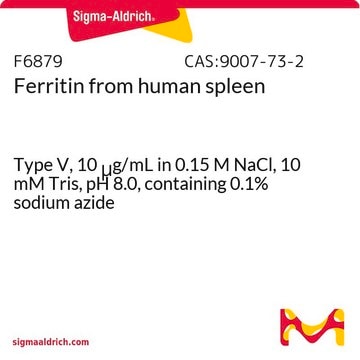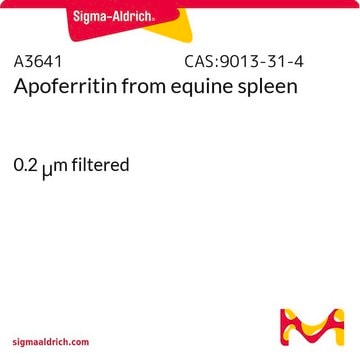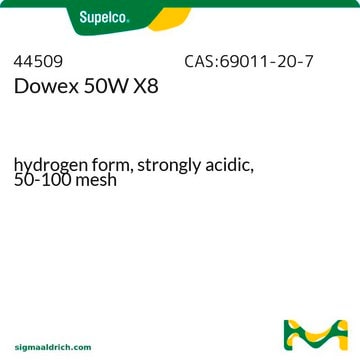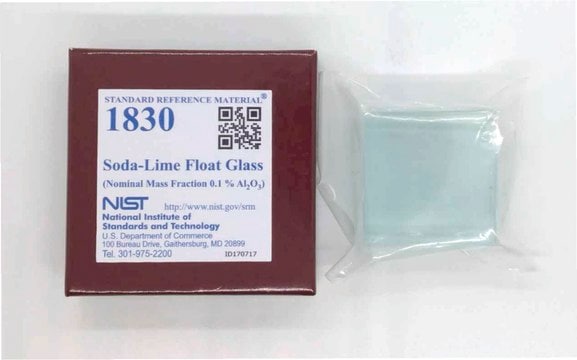MABC602
Anti-Ferritin Heavy Chain Antibody, clone 1-2.3.1.2
clone 1-2.3.1.2, from mouse
Sinónimos:
Ferritin heavy chain, Ferritin H subunit, Cell proliferation-inducing gene 15 protein, Ferritin heavy chain, N-terminally processed
About This Item
Productos recomendados
biological source
mouse
Quality Level
antibody form
purified immunoglobulin
antibody product type
primary antibodies
clone
1-2.3.1.2, monoclonal
species reactivity
human
technique(s)
immunohistochemistry: suitable
western blot: suitable
isotype
IgG2aκ
NCBI accession no.
UniProt accession no.
shipped in
wet ice
target post-translational modification
unmodified
Gene Information
human ... FTH1(2495)
General description
Immunogen
Application
Immunohistochemistry Analysis: A representative lot detected Ferritin Heavy Chain in erythroid blasts of acute myeloid leukaemia M6 tissue, macrophages in the lymph node tissue, and tumor & lung-associated macrophages (Wang, W., et al. (2013). Histopahtology. 62:931–940).
Apoptosis & Cancer
Apoptosis - Additional
Quality
Western Blotting Analysis: 0.5 µg/mL of this antibody detected Ferritin Heavy Chain in 10 µg of U251 cell lysate.
Target description
Physical form
Storage and Stability
Other Notes
Disclaimer
¿No encuentra el producto adecuado?
Pruebe nuestro Herramienta de selección de productos.
Storage Class
12 - Non Combustible Liquids
wgk_germany
WGK 1
flash_point_f
Not applicable
flash_point_c
Not applicable
Certificados de análisis (COA)
Busque Certificados de análisis (COA) introduciendo el número de lote del producto. Los números de lote se encuentran en la etiqueta del producto después de las palabras «Lot» o «Batch»
¿Ya tiene este producto?
Encuentre la documentación para los productos que ha comprado recientemente en la Biblioteca de documentos.
Nuestro equipo de científicos tiene experiencia en todas las áreas de investigación: Ciencias de la vida, Ciencia de los materiales, Síntesis química, Cromatografía, Analítica y muchas otras.
Póngase en contacto con el Servicio técnico